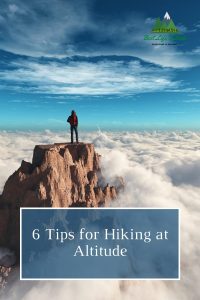 Hiking at altitude is one of our most favorite activities because of the challenge it provides, the amazing views and scenery you encounter, and the amazing landscapes you get to experience. Attitude and mountains are something that everyone should try to enjoy. However, hiking at altitude can also pose risks, some even life-threatening. By following our simple tips you’ll be enjoy the mountains to their fullest and without incident.
Hiking at altitude is one of our most favorite activities because of the challenge it provides, the amazing views and scenery you encounter, and the amazing landscapes you get to experience. Attitude and mountains are something that everyone should try to enjoy. However, hiking at altitude can also pose risks, some even life-threatening. By following our simple tips you’ll be enjoy the mountains to their fullest and without incident.
Avoid Altitude Sickness - Plan Ahead and Be Prepared
Altitude sickness is the real deal and something to be taken serious. Altitude sickness is caused by lower air pressures and reduced level of oxygen as you increase in elevation. Each breath that you take in has less percentage of oxygen as you climb higher and higher this supplying the body and particularly the brain with less oxygen. This can become serious, especially for people coming going from sea level to elevation.
Try to Acclimate to the Altitude Early
We Recommend doing a gradual recommendation for anyone going to extreme elevation changes such as a ski vacation from Los Angeles ( 305 ft) to Aspen, Colorado (8,000 ft). Try to get to your destination at least 3 days before doing any strenuous activity to let your body adjust. Mild acute altitude sickness affects nearly 50% of the people who go from sea level to elevations of 14,000 ft.

Hypoxico-Altitude-To-Oxygen-Chart
Know the Signs of Altitude Sickness
Knowing the signs of altitude sickness is important because it can be fatal in certain situations. Most recreational hikers may only experience mild symptoms of AMS, but it is important to get back to lower altitude quickly before things get worse.
Acute Mountain Sickness
Acute Mountain Sickness (AMS) is the mildest form of altitude sickness and leaves you feeling just generally not well. Some common symptoms include:
- Headache
- Nausea or vomiting
- Dizziness or lightheadedness
- Weakness or fatigue
- Loss of appetite
These symptoms can act as a precursor for worse and more serious reactions to altitude.
High Altitude Pulmonary Edema
High Altitude Pulmonary Edema (HAPE) occurs when liquid begins to fill your lungs and limits your breathing. This is very common at night and should signal that it’s time you turn around.
Symptoms of high-altitude pulmonary edema include:
- Chest tightening
- Extreme fatigue
- Inability to catch your breath, feeling winded
- Blue or gray lips and fingernails
- Coughing, which may produce pink frothy fluid
- Fever
- Abnormal sounds during breathing
High Altitude Cerebral Edema
High Altitude Cerebral Edema (HACE) causes confusion, poor coordination, and poor decision making. These can be difficult to recognize in yourself as your cognition declines so it’s important to hike with a buddy.
Symptoms may include:
- Extreme headache and vomiting
- Walking with an altered or staggering gait
- Extreme Confusion
- Visual hallucinations (seeing things that are not real)
- Poor Decision making
- Changes in normal behavior
Weather Moves In Faster at Elevation
I can’t emphasize how often I see and read about people getting stranded in the Colorado mountains by a quick-moving storm. Especially in the San Juan Mountains with elevations up to 14,000 ft, it can be dangerous. There are few important steps to take so that you won’t get caught in a lightning storm.
Check the Forecast
I know this sounds simple but you would be surprised by how many people think “screw it, I’ve already paid for my vacation, I might as well enjoy it.” Be sure to look at the forecast in the area and plan around the storms. If there isn’t a viable window to complete the hike then it isn’t worth the risk. 49 people die a year from lightning strikes with hundreds and hundreds more having a severe injury in the US alone.
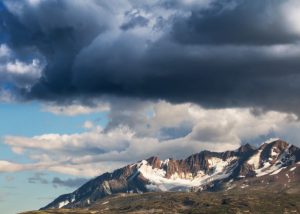
Get Up and Start Early
The vast majority of mountain storms happen in the afternoon. In Colorado, storms typically happen between 2-3 in the afternoon. We’ve been on our way down a trail with a storm coming in and people hiking in jeans on their way up. This just doesn’t make sense. Plan to get started early, and for anyone who is not used to hiking at elevation plan for an extra hour longer than normal as your body just moves slower at altitude.
The Environment is More Extreme at Altitude
The landscapes at elevation are less forgiving than in other situations. There are sharp rocks, more intense elements, less shelter, and a long way from any help. Plan and be prepared for extremes. Some examples include:
- Extreme Exposure – Especially true above timberline. You have nowhere to seek shelter at elevation. This includes the sun, rain, snow, and especially from lightning.
- Wear Sunscreen and Bring More With – The sun is intense at elevation. For every 1,000 feet of elevation gain, the sun’s UV rays intensify by 8-10 percent. This means hiking in Colorado exposes you to UV rays at 2x the intensity as compared to sea level.
- Bring Extra Layers – The weather changes quickly at elevation so you want to be prepared. Bring along a jacket, a lighter layer, wear long pants, and have on a good pair of socks and hiking boots. Tennis shoes just don’t cut it against sharp rocks and unstable trail conditions.
- Have a First Aid Kit in the Group – Anything can happen in the mountains and you would rather be safe than sorry. Cuts, abrasions, and minor sprains are all common things to be prepared for. Less common are animal bites, stings, and broken bones.
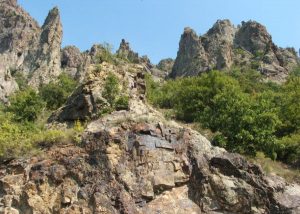
Plan To Move Slower and Take Twice the Time
It’s important to plan ahead and realize hiking at altitude simply takes more time, especially for anyone coming from a lower elevation.
You’ll be taking more breaks to catch your breath and hopefully, to drink water. It’s common for the lungs to feel on fire and your heart rate to increase at a greater rate than you would expect.
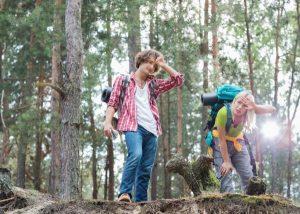
You’ll hike slower because of the elevation gain and the lack of oxygen in your muscles. If you normally hike at a 15-20 minutes mile pace, plan to hike in the 20-30 minutes per mile pain.
Finally, your body simply won’t recover as fast. For any long hikes, those last few miles will be a challenge and at a much slower pace. The final few miles are when most problems tend to occur.
Know Your Fitness Limits
It’s important to know your limits and the limits of everyone in the group. You are only as fast as the slowest hiker. If you are out of shape and limited at a lower elevation then those limitations will only be exaggerated when hiking at a higher elevation.
For those young bucks who are coming from sea level and think they will be able to fly up the mountains, it’s a rude awakening. Physical fitness does not equal altitude fitness. You’re muscles, heart, brain, and lungs will all be deprived of oxygen. Your body can’t make new oxygen-carrying red blood cells fast enough. Being fit will help but it isn’t a free pass to not be prepared.
For any hike at elevation, have a plan to check-in with yourself and the group each mile or a half mile to see how everyone is doing. Realize it’s ok to turn around without making it your destination.
In Review
Hiking at elevation provides some of the prettiest and most amazing scenery that there is to offer. However, it’s important to be prepared and know the risks so that you can get to your destination safely and sound. By following these simple tips, you’ll be able to enjoy all that the mountains have to offer.




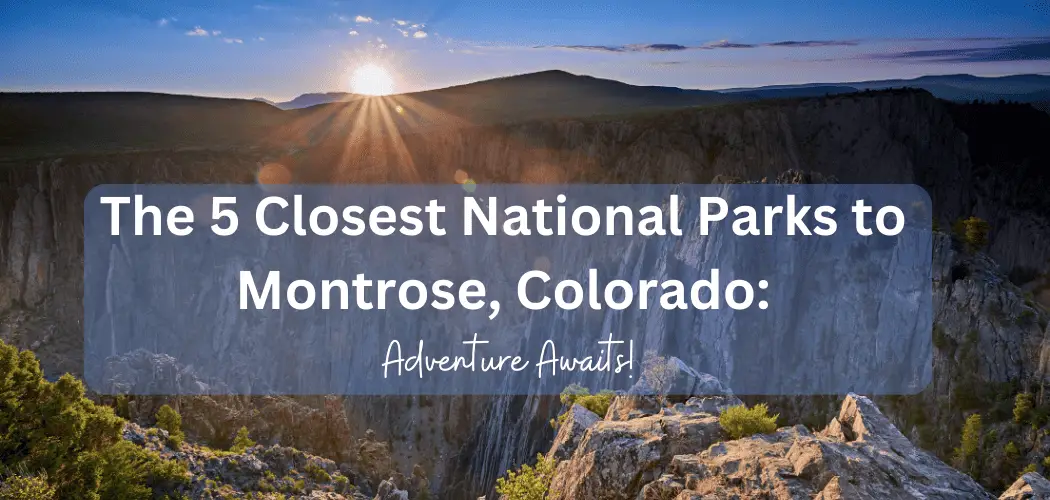
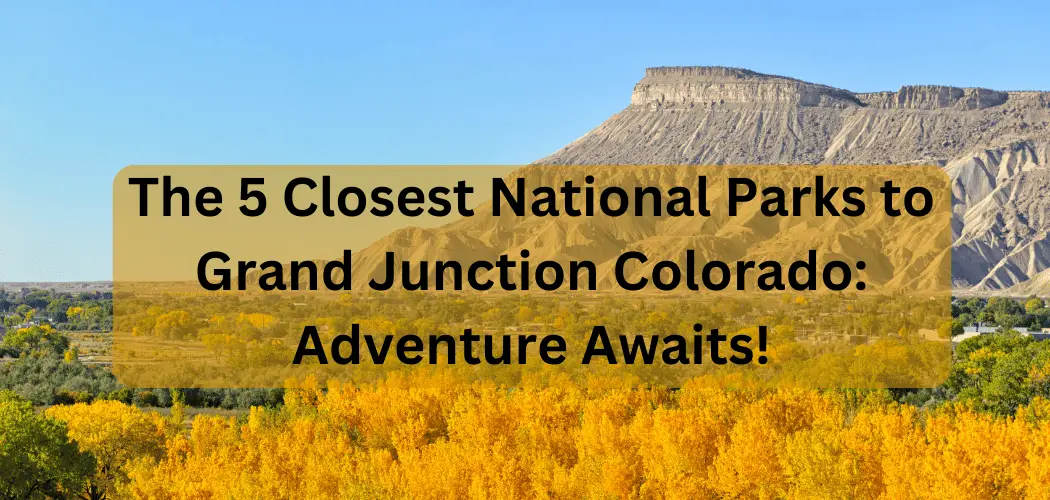


Pingback: Does the Weather Affect Ice Fishing Success? A Helpful Guide - Best Life Outside